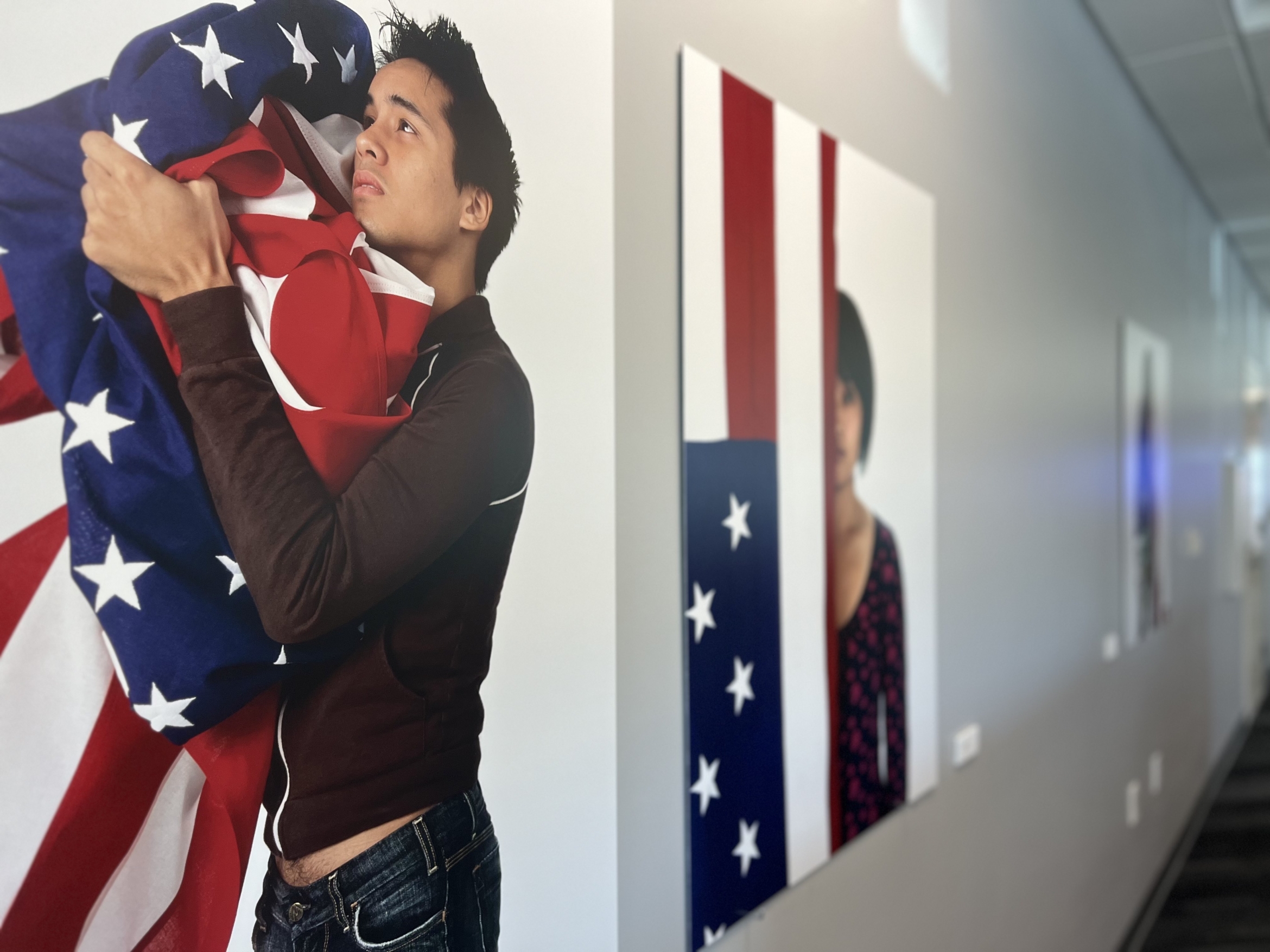
Historian Jeffrey Stewart elected to the American Academy of Arts & Sciences for his work in the visual arts
UC Santa Barbara Black Studies Professor Jeffrey Stewart is one of the newest members to be elected to the prestigious American Academy of Arts & Sciences. The recipient of a 2019 Pulitzer Prize and a 2018 National Book Award for his book, “The New Negro: The Life of Alain Locke (Oxford University Press, 2018),” Stewart joins 249 other artists, scholars, scientists and leaders in the public, non-profit and private sectors being recognized by the 243-year-old institution “for their accomplishments and for the curiosity, creativity and courage to reach new heights.”
“We are tremendously proud to congratulate Professor Stewart on his election to the American Academy of Arts and Sciences,” said UC Santa Barbara Chancellor Henry T. Yang. “This prestigious peer recognition honors his inspirational leadership in the humanities and arts through research, teaching and public service. Here on campus, Jeffrey has made exceptional wide-ranging contributions — to our Department of Black Studies through his renowned scholarship and his service as Chair from 2007 to 2016; to our Office of Diversity, Equity, and Inclusion through his leadership as Interim Vice Chancellor; and much more. As an award-winning author and scholar, his impact reaches far beyond UC Santa Barbara, and this well-deserved election highlights his record of excellence and continued accomplishment in the arts and sciences."
Stewart’s election brings to 49 the number of UC Santa Barbara faculty that have been named fellows of the academy. The new class joins Academy members elected before them, including Benjamin Franklin (elected 1781), Ralph Waldo Emerson (1864), Albert Einstein (1924), Martin Luther King, Jr. (1966), Jennifer Doudna (2003) and Salman Rushdie (2022). Induction ceremonies for new members will take place in Cambridge, Mass., in September.
A historian by training, who received his doctoral degree in American Studies from Yale University in 1979, Stewart is perhaps most widely known in recent years for his acclaimed biography of Alain Locke, a philosopher, critic and interpreter of African American art and literature who is credited as the “Father of the Harlem Renaissance.” In addition to the Pulitzer and the National Book Award, the book also took home the 2018 PROSE Award for Best Biography/Autobiography, the 2018 Black Caucus of the American Library Association Award for Nonfiction and the 2019 American Book Award from the Before Columbus Foundation.
However, in addition to tracing the intersection of history and art through scholarly books and articles, Stewart’s body of work also includes the visual arts — in particular, curatorial work. In 1989 he was selected to curate the exhibit “To Color America: Portraits of Winold Reiss” for the Smithsonian Institution’s National Portrait Gallery. A German artist who was commissioned to portray the heavyweights of the burgeoning cultural movement known as the Harlem Renaissance, Reiss, according to Stewart, created the first modernist fine art portraits of Black intellectuals.
“If you look at Winold Reiss’s work, he’s making a very powerful statement here about the power of color and identity and the seriousness of Black people in the Harlem Renaissance,” Stewart explained, “which was completely against what was the overall imagery of Black people in the United States.” Indeed, the popular depictions of Black people in the early 20th century reduced them to demeaning caricatures, he said, while Reiss’s work, by contrast, casts them in a dignified light, capturing his subjects’ expressions with sensitivity and respect. Reiss’s work would play an important role for the community, becoming part of Locke’s seminal 1925 anthology “The New Negro: An Interpretation.”

In 1998, Stewart curated another major exhibit, titled “Paul Robeson: Artist and Citizen” for the Zimmerli Museum of Art at Rutgers University, focusing on the All American athlete, renowned actor, singer and human rights activist. The exhibit went on tour, showing at the National Portrait Gallery, the California Museum of African American History and the Museum of the City of New York.
Though the exhibits Stewart curates and critiques differ in motivation and content, “the way art engages with identity and community has been the general theme,” he said. Take for example the 2015 retrospective display “A Vision of Change,” a public work mounted on the exterior walls of North Hall on the UCSB campus. That exhibit exists because the UCSB Black Student Union (BSU) Demands Team demanded the university publicly recognize the contributions of 12 BSU members who occupied North Hall in 1968 and demanded equality and representation in the university. Prior to the display’s 2015 unveiling, Stewart taught a summer seminar on curatorial practice to create the North Hall display, where students conducted hands-on research in the archives of UCSB Davidson Library, located photographs, conducted interviews with the “68ers” and helped design an exhibition made up almost entirely of university artifacts. Students learned “visual literacy,” according to Stewart, and how North Hall activism not only established the Department of Black Studies and Center for Black Studies, but also sparked the momentum that led to the founding of the Chicano and Chicana Studies, Asian American Studies and Feminist Studies departments in subsequent years. While not a museum exhibit, said Stewart, the display is a powerful public art statement of Black student efficacy on the UCSB campus.
“I think students in particular need a sense of community,” said Stewart, who came to the UCSB campus in 2007 as chair of the Department of Black Studies. “It’s not just that you’re coming here to do your studies, get your grades, start a career, whatever. You’re also communing. And art helps that feeling of community take place.”

Currently the Interim Vice Chancellor for Diversity, Equity and Inclusion, Stewart continues to merge art with community. His Jeffrey’s Jazz Coffeehouse, an immersive musical experience, recreates and conveys the explosion of jazz that was one of the gifts of the Harlem Renaissance, but not just for the music and history.
“It’s about creating a scene, but also creating community for students, faculty and the Isla Vista neighborhood because I think we don’t have enough of that,” he said.
More recently, Stewart has edited a collection of Alain Locke’s essays, “The New Negro Aesthetic (Penguin Classics, 2022),” and another essay collection on what he calls the “Washington Renaissance” in a Yale University Press publication, “Beauty Born of Struggle: The Art of Black Washington (2023).” Commissioned during a gathering of artists and scholars at the National Gallery of Art (NGA) in 2017 to discuss the acquisition of a collection of African American art by the NGA, Stewart was asked to edit and help design the lavishly illustrated volume that provides critical assessments of the contribution made by Black creatives to the “art of Washington.”
Additionally, he noted, our world is filled with artists whose creativity opens our eyes and minds to new possibilities, including such local artists as Toni Scott, Megan Koth and Sarah Rosalena, whose work explores the untapped possibilities of history, identity and community.
“It’s nice to be acknowledged (for my work in the visual arts),” Stewart said, “and I do appreciate the campus support for these kinds of things as well.” Acknowledging the many efforts at art across UCSB, his hope is “that we can embrace art as something that could be seen and celebrated more throughout the campus.”
Sonia Fernandez
Senior Science Writer
(805) 893-4765
sonia.fernandez@ucsb.edu



